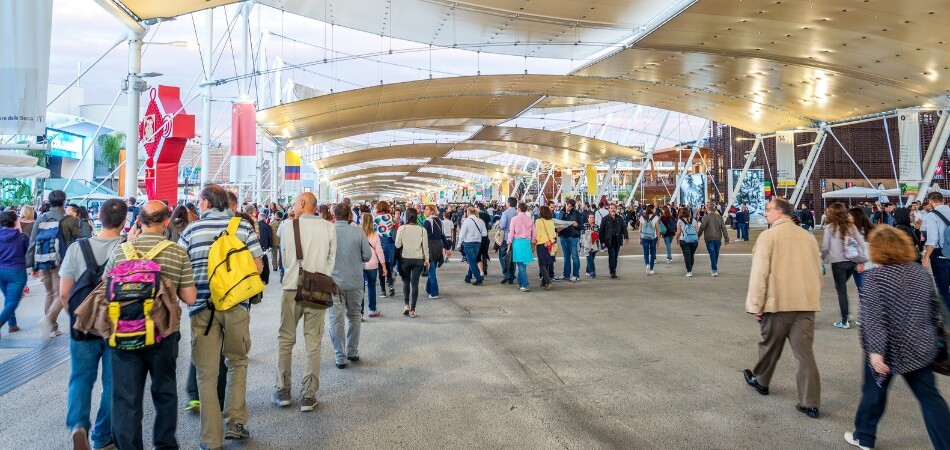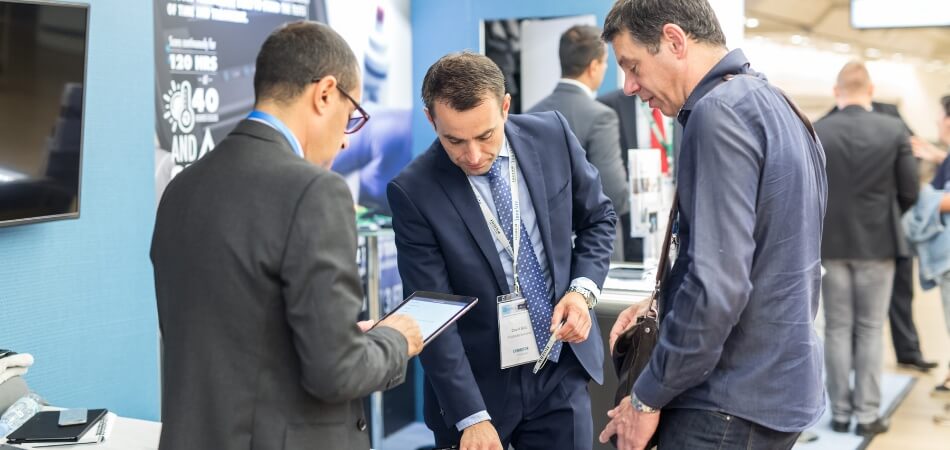Trade shows and expositions have long been recognized as powerful catalysts for economic growth and prosperity. These dynamic events bring together industry leaders, innovators, and enthusiasts under one roof, creating a vibrant marketplace of ideas and opportunities. So, understanding the economic benefits of trade Shows and expositions is crucial.
To grasp the economic benefits of trade shows and expos, think about how they can boost sales, save costs through effective product showcasing, and stimulate local economies through visitor spending. These events can also enhance brand recognition and market growth over time.
In this blog, we’ll show you how trade shows and expositions boost economies. They bring in tourists, make money, and help businesses grow. They also make businesses more visible and create opportunities for success.
History of Trade Shows and Expositions
Trade shows and expositions, which have a long history, are events where people display and sell their products. These gatherings are crucial for trade and bringing different groups together.
In the Middle Ages, there were famous trade fairs in France called Champagne Fairs. They attracted traders from all over Europe. During the 1800s, there were World’s Fairs that showed off incredible inventions like the Eiffel Tower and the telephone. These fairs were essential for introducing new ideas and boosting international trade.
In the 1900s, trade shows became more specialized, focusing on specific industries like cars or electronics. Today, trade shows are still popular, and some even happen online. They continue to help businesses grow and connect with customers worldwide, playing a significant role in the global economy.
Economic Benefits of Trade Shows and Expositions
In the world of business, the economic benefits of trade shows and expositions stand as powerful drivers of growth and opportunity. These dynamic events unite industry players and consumers, yielding a multitude of financial advantages.

Boosting Local Economies
Trade shows and expositions, by attracting attendees from different regions, significantly boost local economies. These events lead to increased tourism, higher hotel bookings, and a surge in revenue for local businesses, ranging from restaurants to transportation services.
Enhancing Market Visibility
Exhibitors seize the opportunity to showcase their products and services to a diverse audience, increasing brand recognition and paving the way for market expansion. Being part of these events allows businesses to stand out in their respective industries.
Facilitating Lucrative Partnerships
Trade shows provide a dynamic platform for businesses to network and establish potentially lucrative partnerships. These collaborations often result in the expansion of market reach, opening doors to new customers and opportunities.
Job Creation
Hosting and participating in trade shows necessitate a substantial workforce, leading to job creation both in temporary and permanent roles. This job growth extends not only to the event industry itself but also to related sectors like hospitality and logistics.
Infrastructure Development
Many host cities invest in infrastructure development and improvements in anticipation of trade shows and expositions. These enhancements benefit not only the events but also the local community, creating a lasting legacy.
Intellectual Property and Innovation
Trade shows serve as innovation hubs, allowing businesses to showcase their latest inventions and technologies. Additionally, these events offer opportunities to protect intellectual property and drive industry advancements through collaborations and idea sharing.
Sustainability and Responsible Practices
With a growing focus on sustainability, many trade shows are adopting eco-friendly practices to reduce their environmental footprint. These responsible practices not only benefit the environment but also appeal to conscious consumers and businesses.
Post-Event Economic Impact
The positive economic effects of trade shows extend well beyond their conclusion. New partnerships, increased sales, and ongoing investments continue to shape and benefit the economy long after the event has concluded.
Measuring the Economic Impact of Trade Shows and Expositions
Measuring the economic impact of trade shows and expositions is crucial for informed decision-making. This guide outlines essential steps for a comprehensive assessment, benefiting businesses and host cities.

Step-1. Objective Definition and Scope
Begin by clearly defining research objectives, whether it’s to assess the impact on a specific industry, city, or region. Additionally, establish the analysis time frame, indicating whether you’re measuring the event’s short-term or long-term impact. These initial steps set the foundation for a focused and meaningful economic impact assessment.
Step-2. Comprehensive Data Collection
Gather comprehensive data on event attendance, exhibitors, and economic transactions, including ticket sales, exhibitor fees, attendee expenses, merchandise sales, and sponsorship revenue.
Step-3. Direct Economic Impact Assessment
Calculate the direct financial impact by summing up all event-related expenditures and revenues, including ticket sales, booth fees, sponsorship income, and merchandise sales. Account for the net financial gain or loss from the event.
Step-4. Indirect Economic Impact Estimation
Estimate the broader economic effects, accounting for secondary spending. This includes assessing increased demand for local goods and services, supplier business growth, and related economic activity.
Step-5. Induced Economic Impact Analysis
Analyze the ripple effect of spending, considering the re-spending of wages earned by those directly and indirectly affected by the event, such as employees, suppliers, and local businesses. Calculate the economic activities triggered by these expenditures.
Step-6. Employment Impact Assessment
Evaluating the impact on employment, both short-term and long-term, is essential. This involves considering job creation and support in sectors like event planning, hospitality, and supply chains. It helps us understand how trade shows and expositions affect local and regional employment.
Step-7. Tax Revenue Evaluation
Estimate tax revenue generated, encompassing sales tax, hotel tax, and income tax from event-related employment. Analyze the contributions to local, regional, and national tax revenue.
Step-8. Qualitative Insights from Surveys and Interviews
Gather qualitative data through surveys and interviews with attendees, exhibitors, and local businesses to gain insights into their experiences and perceptions of the event’s economic impact. Understand the qualitative aspects, such as the event’s role in building relationships and fostering innovation within the industry.
Tips for Maximize Benefits of Trade Shows and Exposition
Trade shows and expositions offer excellent opportunities for businesses to boost their bottom line. By implementing effective strategies, you can maximize the economic benefits of participating in these events.
Strategic Booth Design
Invest in an eye-catching booth design that highlights your products or services. Use engaging visuals, interactive displays, and clear signage to attract attendees’ attention and encourage them to visit your booth. An appealing booth can drive more foot traffic and lead to increased sales and partnerships.
Pre-show Marketing
Leverage pre-show marketing to create buzz around your participation. Utilize social media, email campaigns, and press releases to inform your target audience about your presence at the event. Offering sneak peeks or exclusive deals can generate anticipation and attract potential customers to your booth.
Engagement Activities
Plan engaging activities or demonstrations at your booth to captivate attendees. Interactive sessions, product launches, or live demonstrations can pique curiosity and create memorable experiences. Engaged visitors are more likely to convert into customers or prospects for future business.
Networking and Relationship Building
Trade shows are excellent networking opportunities. Prioritize building relationships with other exhibitors, industry professionals, and potential clients. Exchange contact information, follow up promptly after the event, and nurture these connections to unlock long-term economic benefits.
Collect and Analyze Data
Implement a data collection strategy to gather attendee information and insights. Use lead capture tools, surveys, or QR codes to collect data on interested prospects. Analyzing this data post-event can help you tailor your marketing efforts, leading to more targeted and profitable campaigns.
Post-event Follow-up
Don’t let the momentum fade after the event. Immediately follow up with leads and contacts made during the trade show. Send personalized messages, offer post-event discounts, and provide valuable content to keep potential customers engaged and convert leads into paying clients.
By implementing these strategies, you can enhance your trade show or exposition experience, attract more prospects, and ultimately maximize the economic benefits of your participation.
Challenges You May Face in Trade Shows and Expositions
Participating in trade shows and expositions can be rewarding, but they also come with several challenges that businesses should be prepared to address. Here are some of the key challenges:

Fierce Competition
Standing out among numerous exhibitors can be a significant challenge, requiring effective booth design and marketing strategies.
Costs and Budgeting
Trade show participation can be expensive, with booth fees, travel, and marketing costs. Managing budgets is crucial.
Logistics and Planning
Managing booth setup, transportation, and accommodation logistics can be complex and demanding.
Attracting the Right Audience
Ensuring that your target audience visits your booth can be challenging, requiring precise marketing efforts.
Staff Training
Preparing booth staff with adequate product knowledge and customer engagement skills is essential.
Post-Event Follow-Up
Effectively converting event contacts into customers or partners through lead follow-up and nurturing can be challenging.
Lead Quality
Generating leads is essential, but ensuring their quality and relevance to your business can be challenging. Sorting and prioritizing leads effectively is key.
Technology Integration
Incorporating technology, such as interactive displays or lead capture tools, can be challenging if not properly planned and executed, impacting the overall event experience.
Bottom Line
Trade shows and expositions are crucial for our economy. They generate income by attracting visitors and increasing the visibility of businesses. Additionally, they not only create jobs during the events but also contribute to long-term employment opportunities. These gatherings serve as platforms for companies to showcase innovations and collaborate for mutual growth.
In view of their historical significance and contemporary relevance, trade shows transcend mere product displays. They stimulate economic growth, foster idea exchange, and facilitate global connections. Recognizing the economic benefits of trade shows and expositions underscores their vital role in today’s business landscape and their potential to shape a prosperous future.
In essence, these events are vital contributors to our economic well-being, helping us thrive and create a brighter tomorrow.


